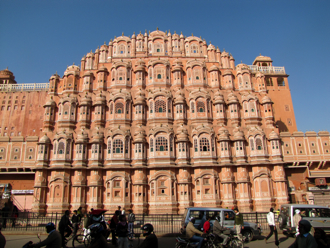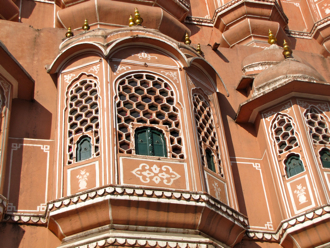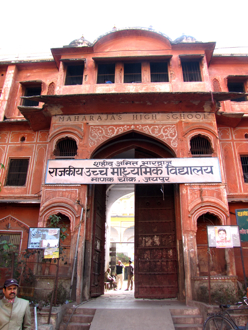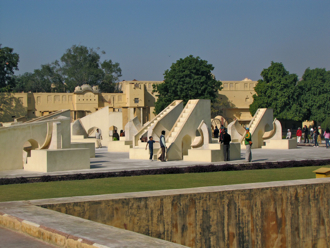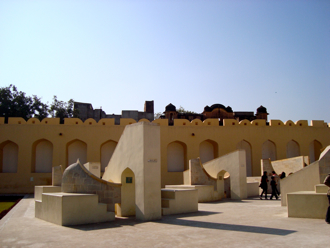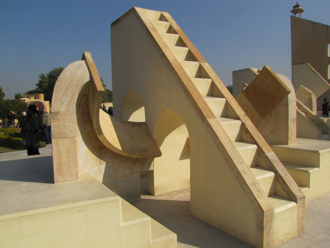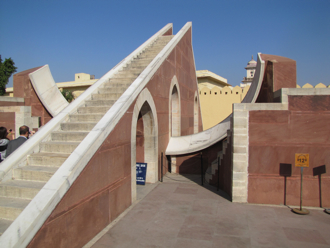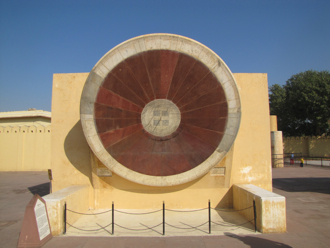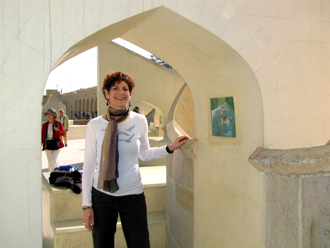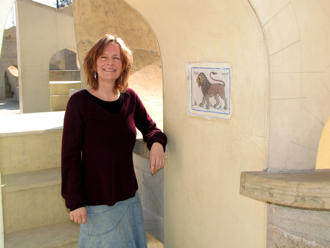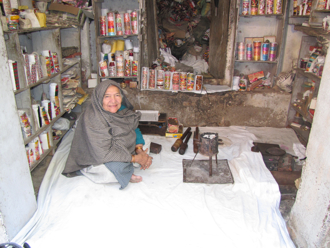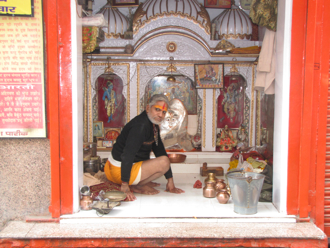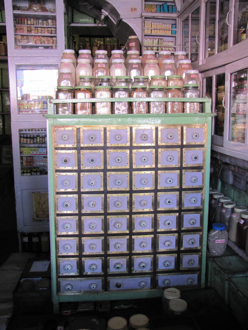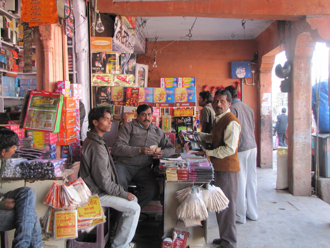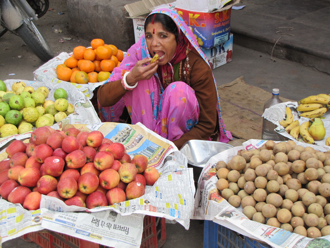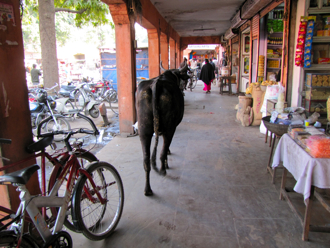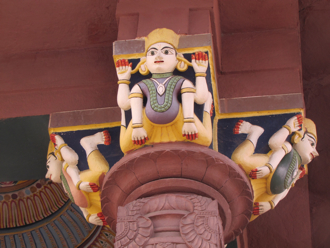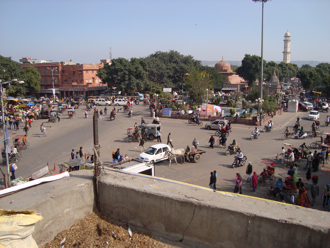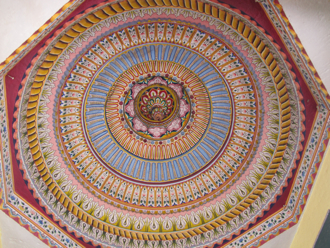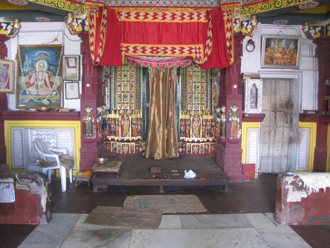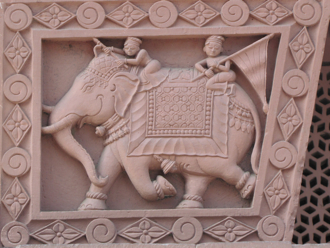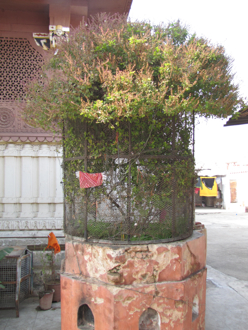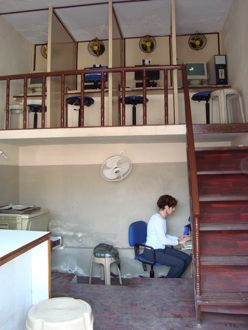A Planned City
We spent the first day of the new year touring Jaipur. The old city center was lovely. It was designed in the early 1700s by a maharaja named Jai Singh and his architect. It is organized into a 3x3 square of city blocks separated by wide, gracious avenues. The architecture features delicate stone latticework. In 1876 the whole town was painted pink, the color of hospitality, to welcome the Prince of Wales, and the tradition has remained.
Jantar Mantar
Jaipur’s founding ruler, Jai Singh, was fascinated by astronomy and astrology. In the early 1700s, he sent scholars around the world to collect the latest scientific knowledge, and then built this amazing set of astronomical tools. They have a curiously modern aesthetic, almost like Art Deco.
The Bazaars
Our guide took us on a walking tour of the bazaars, to get a flavor of old Jaipur.
At the end, our guide took us to a small Hindu temple whose roof offered a great view. The temple itself was interesting too, from the richly decorated interior to the holy basil plant growing in front.
Internet Cafe
We made a brief stop at an internet café because the university guest house where we were staying did not have internet access. Given my interest in technology use, I was intrigued to observe the café. It did not seem to be getting a lot of business, but that might have been because we were there on a Saturday.
Rich and Poor
In Jaipur, we saw extremes of wealth and poverty. In driving around, we saw mountains of trash, as well as many tattered cardboard shacks lining the roads, homes of India’s poorest inhabitants. But we also drove to a 5-star hotel, Clark’s Amer (in order to access their internet wifi connection), which took us through a wealthy area lined with expensive car dealerships, restaurants, and hotels. This neighborhood could have been lifted out of Beverly Hills. It’s interesting to note that we didn’t take any pictures of these extremes in Jaipur! I’m not sure why. However, Tricia did take a picture of a shantytown from the airport runway in Mumbai.
Our Guide and the Issue of Commissions
We really liked our Jaipur guide as soon as we met him. He was charming and engaging, and eager to share his love of Jaipur and his extensive knowledge about the city. He proudly told us he was a member of the Rajput, the warrior class, but he himself had a warm, peaceful personality. He was carefully dressed in a jacket and cravat. All morning, he took us around to fascinating sites.
The guide also taught us how to cross big streets in a situation where the traffic never stops. He would line us all up along the edge of the road, holding hands. He took the end position closest to oncoming traffic. Then he would carefully watch the cars until he saw an opportunity, and then have us all dash to the middle of the road. There he would run to the other end of our human chain, so that he was closest to traffic headed the other way. Again he would carefully watch the cars and then initiate our final dash to safety.
Much as we liked our guide in the morning, he disappointed us in the afternoon. For lunch, he did not want to take us to the restaurant recommended by Gerda Unnithan – he said it was on the other side of town and that the shopping we wanted to do was on this side of town. So instead he took us to a local restaurant where all patrons appeared to be western tourists. Likewise, he resisted taking us to the stores we wanted to go to, instead taking us to stores of his preference, run by Kashmiris. The guide in Agra had also encouraged us to go to Kashmiri-owned stores of his choosing, although in that case we didn’t have any other stores in mind, so the problem was not as stark.
We learned from these experiences. It seemed obvious that the guides were getting commissions from the restaurants and shops, and that we needed to be more assertive in going to venues of our own choosing. We needed use the recommendations in our guidebook. At the same time, when we cut off our guide’s efforts to take us to more stores, we could see that he was unhappy. And I started to worry that the guides might actually need commissions from the shops to make up a reasonable salary. The whole system was frustrating… We were later told by a different guide that the guides received no payment from the travel agency, only from the shops. It was hard to evaluate the truth of this claim.
We also learned that the shops that the guides wanted to take us to were usually owned by Kashmiris. We came to recognize the style of these shops: they carried goods from all over India, especially from Kashmir, rather than focusing on local products. The goods were high quality and expensive. The stores were large and offered nice bathrooms as an inducement to visit.
